Ling Jin
Macroscopic Emission Modeling of Urban Traffic Using Probe Vehicle Data: A Machine Learning Approach
Nov 11, 2025
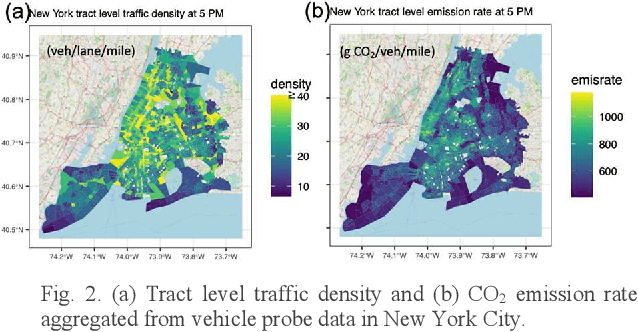
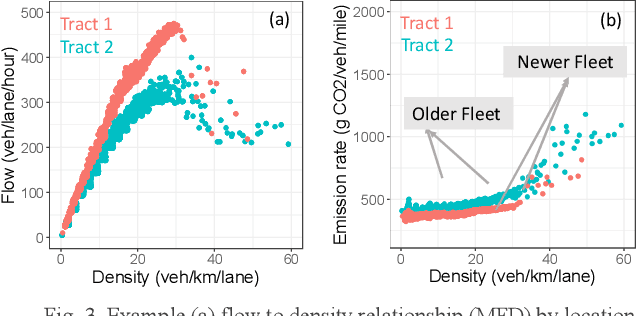
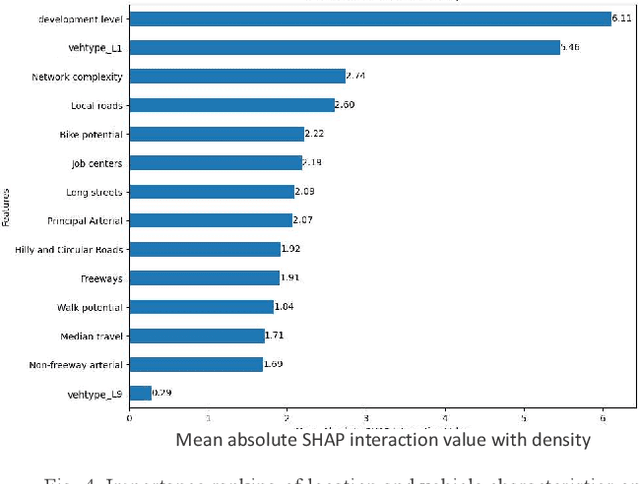
Abstract:Urban congestions cause inefficient movement of vehicles and exacerbate greenhouse gas emissions and urban air pollution. Macroscopic emission fundamental diagram (eMFD)captures an orderly relationship among emission and aggregated traffic variables at the network level, allowing for real-time monitoring of region-wide emissions and optimal allocation of travel demand to existing networks, reducing urban congestion and associated emissions. However, empirically derived eMFD models are sparse due to historical data limitation. Leveraging a large-scale and granular traffic and emission data derived from probe vehicles, this study is the first to apply machine learning methods to predict the network wide emission rate to traffic relationship in U.S. urban areas at a large scale. The analysis framework and insights developed in this work generate data-driven eMFDs and a deeper understanding of their location dependence on network, infrastructure, land use, and vehicle characteristics, enabling transportation authorities to measure carbon emissions from urban transport of given travel demand and optimize location specific traffic management and planning decisions to mitigate network-wide emissions.
Transformer-based toxin-protein interaction analysis prioritizes airborne particulate matter components with potential adverse health effects
Dec 21, 2024Abstract:Air pollution, particularly airborne particulate matter (PM), poses a significant threat to public health globally. It is crucial to comprehend the association between PM-associated toxic components and their cellular targets in humans to understand the mechanisms by which air pollution impacts health and to establish causal relationships between air pollution and public health consequences. Although many studies have explored the impact of PM on human health, the understanding of the association between toxins and the associated targets remain limited. Leveraging cutting-edge deep learning technologies, we developed tipFormer (toxin-protein interaction prediction based on transformer), a novel deep-learning tool for identifying toxic components capable of penetrating human cells and instigating pathogenic biological activities and signaling cascades. Experimental results show that tipFormer effectively captures interactions between proteins and toxic components. It incorporates dual pre-trained language models to encode protein sequences and chemicals. It employs a convolutional encoder to assimilate the sequential attributes of proteins and chemicals. It then introduces a learning module with a cross-attention mechanism to decode and elucidate the multifaceted interactions pivotal for the hotspots binding proteins and chemicals. Experimental results show that tipFormer effectively captures interactions between proteins and toxic components. This approach offers significant value to air quality and toxicology researchers by allowing high-throughput identification and prioritization of hazards. It supports more targeted laboratory studies and field measurements, ultimately enhancing our understanding of how air pollution impacts human health.
Vision-language Assisted Attribute Learning
Dec 15, 2023



Abstract:Attribute labeling at large scale is typically incomplete and partial, posing significant challenges to model optimization. Existing attribute learning methods often treat the missing labels as negative or simply ignore them all during training, either of which could hamper the model performance to a great extent. To overcome these limitations, in this paper we leverage the available vision-language knowledge to explicitly disclose the missing labels for enhancing model learning. Given an image, we predict the likelihood of each missing attribute label assisted by an off-the-shelf vision-language model, and randomly select to ignore those with high scores in training. Our strategy strikes a good balance between fully ignoring and negatifying the missing labels, as these high scores are found to be informative on revealing label ambiguity. Extensive experiments show that our proposed vision-language assisted loss can achieve state-of-the-art performance on the newly cleaned VAW dataset. Qualitative evaluation demonstrates the ability of the proposed method in predicting more complete attributes.
Super-Resolution Information Enhancement For Crowd Counting
Mar 13, 2023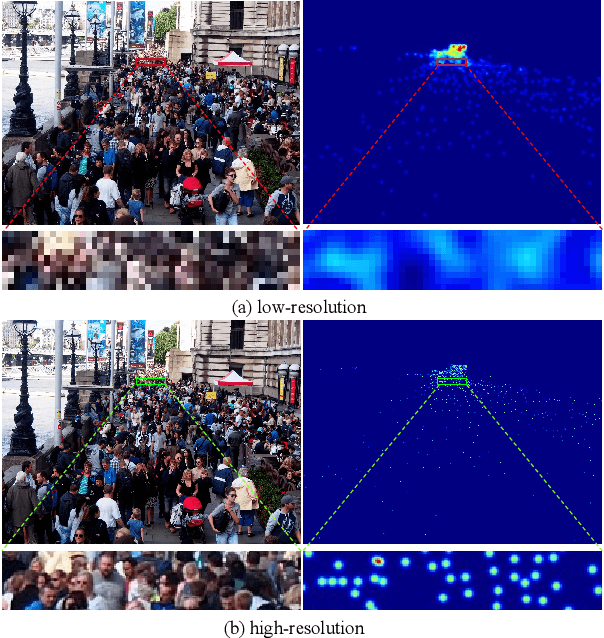



Abstract:Crowd counting is a challenging task due to the heavy occlusions, scales, and density variations. Existing methods handle these challenges effectively while ignoring low-resolution (LR) circumstances. The LR circumstances weaken the counting performance deeply for two crucial reasons: 1) limited detail information; 2) overlapping head regions accumulate in density maps and result in extreme ground-truth values. An intuitive solution is to employ super-resolution (SR) pre-processes for the input LR images. However, it complicates the inference steps and thus limits application potentials when requiring real-time. We propose a more elegant method termed Multi-Scale Super-Resolution Module (MSSRM). It guides the network to estimate the lost de tails and enhances the detailed information in the feature space. Noteworthy that the MSSRM is plug-in plug-out and deals with the LR problems with no inference cost. As the proposed method requires SR labels, we further propose a Super-Resolution Crowd Counting dataset (SR-Crowd). Extensive experiments on three datasets demonstrate the superiority of our method. The code will be available at https://github.com/PRIS-CV/MSSRM.git.
Investigating Underlying Drivers of Variability in Residential Energy Usage Patterns with Daily Load Shape Clustering of Smart Meter Data
Feb 16, 2021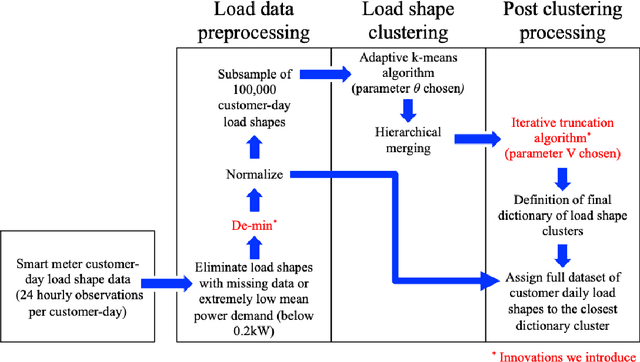
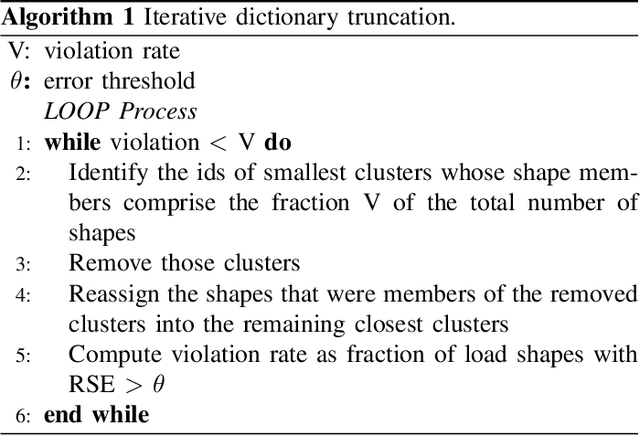
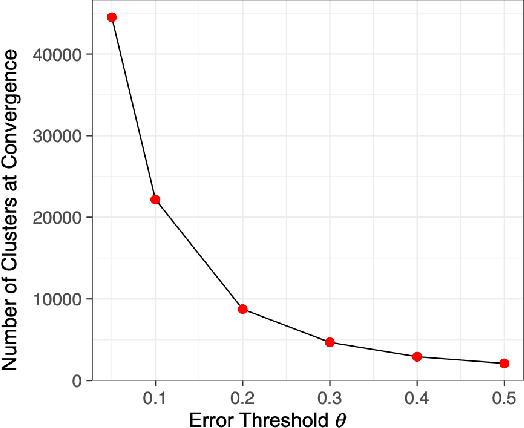
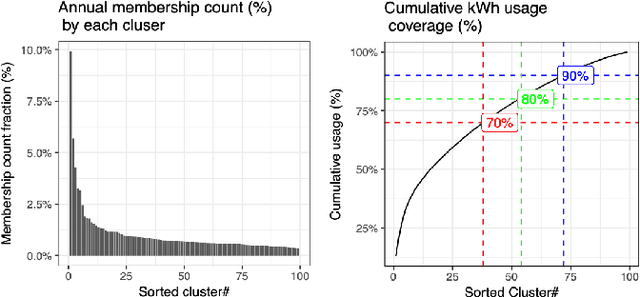
Abstract:Residential customers have traditionally not been treated as individual entities due to the high volatility in residential consumption patterns as well as a historic focus on aggregated loads from the utility and system feeder perspective. Large-scale deployment of smart meters has motivated increasing studies to explore disaggregated daily load patterns, which can reveal important heterogeneity across different time scales, weather conditions, as well as within and across individual households. This paper aims to shed light on the mechanisms by which electricity consumption patterns exhibit variability and the different constraints that may affect demand-response (DR) flexibility. We systematically evaluate the relationship between daily time-of-use patterns and their variability to external and internal influencing factors, including time scales of interest, meteorological conditions, and household characteristics by application of an improved version of the adaptive K-means clustering method to profile "household-days" of a summer peaking utility. We find that for this summer-peaking utility, outdoor temperature is the most important external driver of the load shape variability relative to seasonality and day-of-week. The top three consumption patterns represent approximately 50% of usage on the highest temperature days. The variability in summer load shapes across customers can be explained by the responsiveness of the households to outside temperature. Our results suggest that depending on the influencing factors, not all the consumption variability can be readily translated to consumption flexibility. Such information needs to be further explored in segmenting customers for better program targeting and tailoring to meet the needs of the rapidly evolving electricity grid.
 Add to Chrome
Add to Chrome Add to Firefox
Add to Firefox Add to Edge
Add to Edge